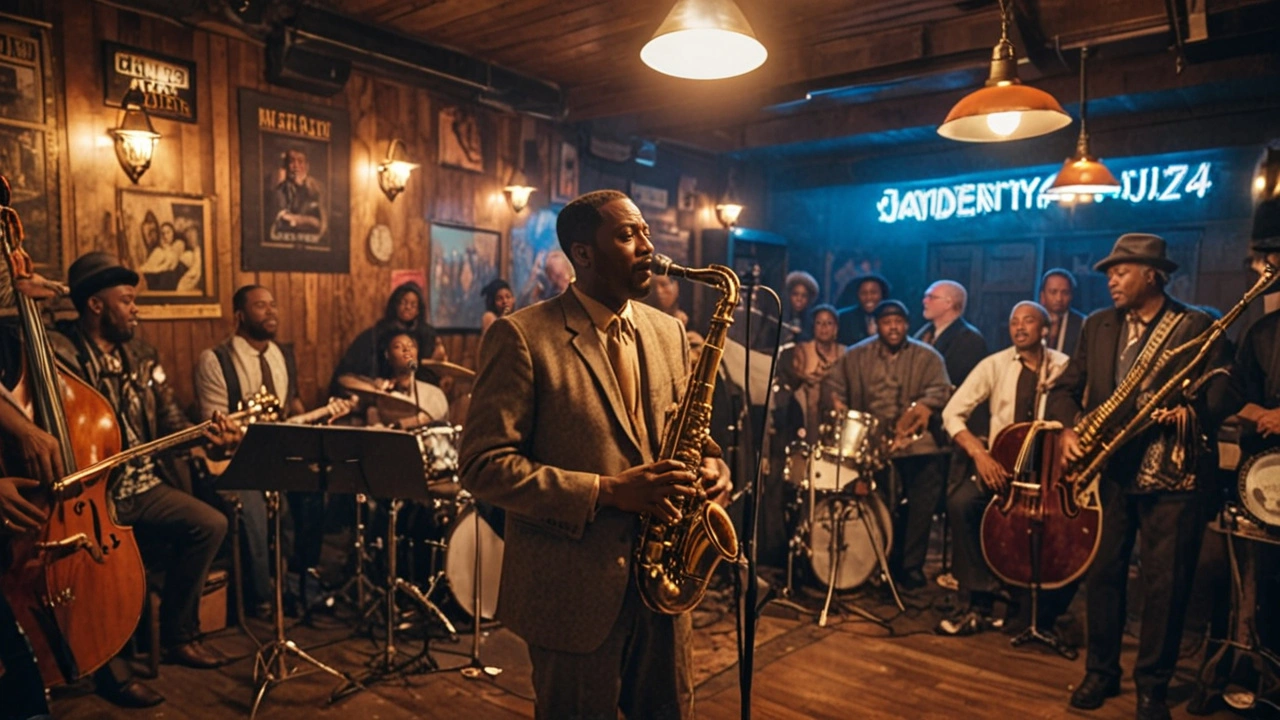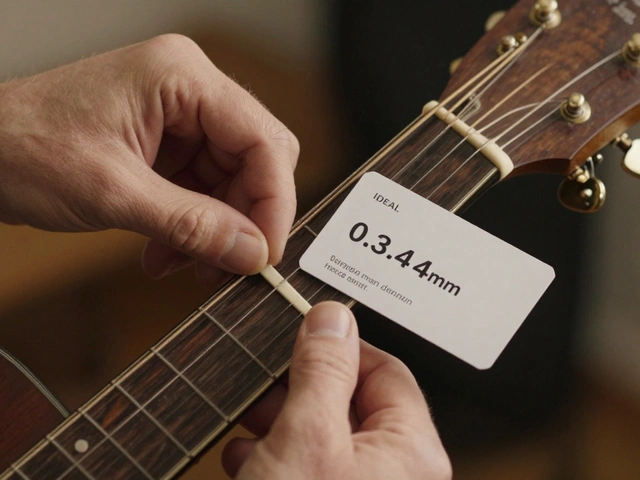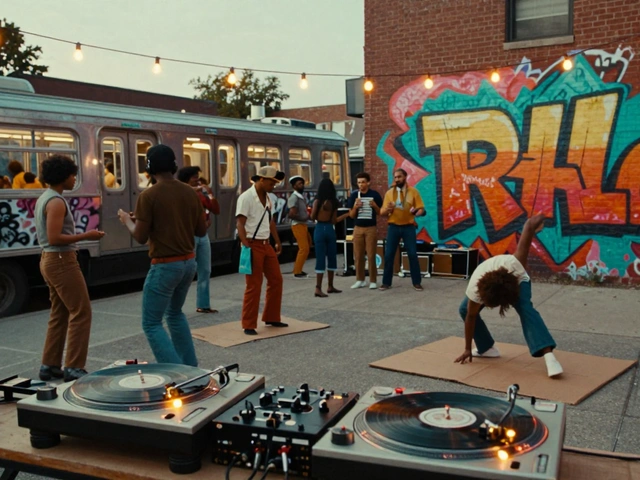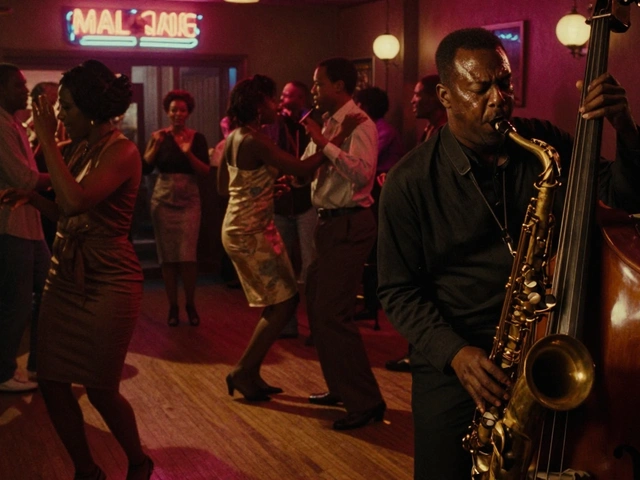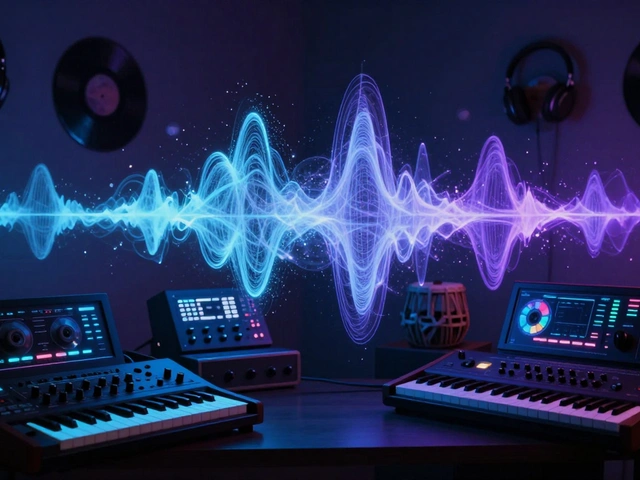Rhythm and Blues, often shortened to R&B, is a genre that carries a soul like no other. Born from the vibrant culture of African American communities in the 1940s, it has since evolved and woven itself into the fabric of modern music.
R&B started as a blend of jazz, gospel, and blues influences. Artists like Ray Charles and Aretha Franklin elevated the genre, pouring raw emotion into every note. Their music spoke directly to listeners' hearts and still resonates today.
This genre's signature sound is unmistakable. Smooth vocal lines, heartfelt lyrics, and a rhythm section that gets you moving define the essence of R&B. It's a genre that encapsulates the highs and lows of life, love, heartache, and joy.
The cultural impact of R&B extends beyond music. It has influenced fashion, language, and even social movements. Artists have used their platforms to voice social issues, making R&B a powerful tool for expression and change.
Today, R&B continues to thrive. Modern artists build on the foundations laid by their predecessors, incorporating new styles while honoring the genre’s rich history. From Beyonce to Bruno Mars, the heartbeat of R&B is stronger than ever.
Origins and Evolution
The story of Rhythm and Blues begins in the mid-20th century, during a time of immense cultural and social change in America. Emerging primarily from African American communities, R&B arose as a fusion of jazz, gospel, and the blues. The term 'Rhythm and Blues' itself was coined by Jerry Wexler of Billboard magazine in 1947, replacing the derogatory term 'race music' previously used for recordings by Black artists.
In the post-World War II era, cities like Chicago, Detroit, and New York became melting pots of musical innovation. Jazz clubs and gospel choirs provided fertile ground for experimentation. Artists began blending the complex rhythms of jazz with the emotional intensity of the blues and the spiritual fervor of gospel music. This created a new sound that quickly gained popularity among black audiences. At the same time, migration patterns saw African Americans moving from the rural South to urban centers, bringing their rich musical heritage with them.
The 1950s marked a golden era for R&B. Labels like Atlantic Records and Motown began to thrive, giving voice to legendary artists such as Ray Charles, whose pioneering blend of R&B and gospel led to hits like "What'd I Say." Ray Charles has been famously quoted saying,
“Music is nothing separate from me. It is me... You'd have to remove the music surgically.”Meanwhile, the smooth vocal group harmonies of The Drifters and The Platters brought R&B into the mainstream foreground.
As the 1960s rolled in, R&B continued to evolve, intertwining with the burgeoning soul music scene. Artists like Aretha Franklin, often hailed as the Queen of Soul, and Otis Redding expanded the boundaries of R&B, adding layers of emotional depth and social commentary to their music. This period was also marked by the civil rights movement, with R&B artists frequently using their songs to address issues of inequality and injustice.
By the 1970s, the genre had broadened even further. The rise of funk, with its strong bass lines and syncopated rhythms, influenced R&B's direction, thanks to bands like Earth, Wind & Fire and Parliament-Funkadelic. This decade also saw the advent of disco, which borrowed heavily from the R&B playbook, incorporating its rhythms into dance music that took over nightclubs across the country.
The 1980s and 1990s brought yet another transformation. The advent of digital technology and the rise of hip-hop integrated new elements into R&B. Artists like Michael Jackson and Prince not only became icons but also innovators who pushed the genre's boundaries. In the '90s, the New Jack Swing era—spearheaded by producers like Teddy Riley—combined hip-hop beats with traditional R&B to create a fresh sound.
Today, R&B continues to adapt and thrive. Contemporary artists like Beyonce, Frank Ocean, and H.E.R. have kept the genre alive and relevant, blending classic elements with modern influences. With its rich history and endless capacity for reinvention, Rhythm and Blues remains a genre that deeply resonates with the human experience, speaking directly to the heart.
Key Artists and Influences
Rhythm and Blues wouldn't be what it is today without the vision and talent of its pioneering artists. One can't mention R&B without tipping the hat to Ray Charles, often dubbed 'The Genius.' His blending of gospel and blues into a soulful concoction was revolutionary. Ray Charles' groundbreaking hit 'What'd I Say' in 1959 broke the barriers and laid a new roadmap for what R&B could become. Not just a pianist and vocalist, he was a trailblazer who turned every performance into storytelling through music.
Another monumental figure is Aretha Franklin. Dubbed the 'Queen of Soul,' her powerful voice and emotional depth set the standard for female vocalists in the genre. Hits like 'Respect' and 'Natural Woman' didn't just top charts; they became anthems for social change. Aretha wasn't just singing; she was commanding respect and elevating the strength and resilience of women everywhere. It's impossible to discuss R&B without acknowledging how her influence shaped the genre's trajectory and cultural relevance.
Stevie Wonder is another icon whose musical genius and sheer stamina in the industry have kept the flame of R&B burning bright. Debuting with 'Fingertips' at a young age, Stevie went on to craft albums that are considered masterpieces. Who could forget 'Songs in the Key of Life,' a seminal work that showcases his versatility and deep understanding of human emotion? Stevie's work blends R&B with pop, jazz, and even reggae, illustrating the genre’s flexibility.
“Music is a world within itself, with a language we all understand,” Stevie Wonder once said, reminding us that R&B's soulful tunes speak universally.
Don't overlook James Brown, often hailed as the 'Godfather of Soul.' Though his style tilted more towards funk, his early work heavily influenced the R&B landscape. Songs like 'Papa's Got a Brand New Bag' and 'I Got You (I Feel Good)' are timeless pieces that married energetic performances with deep grooves, setting the stage for future artists. James Brown’s unparalleled stage presence and charismatic personality made him a giant in the industry.
The journey through R&B wouldn’t be complete without mentioning Marvin Gaye. His album 'What's Going On' addressed social and political issues head-on, a bold move in the early '70s. Gaye's silky voice and provocative lyrics opened a new chapter for R&B, making it a conduit for addressing broader societal issues. This brave step not only elevated him to iconic status but also deepened the genre's layers, proving that R&B could be both entertaining and thought-provoking.
Contemporary artists like Beyoncé and Bruno Mars continue to shape the genre, infusing it with modern elements while honoring its roots. Beyoncé’s 'Lemonade' album, for example, weaves intricate narratives that touch on love, betrayal, and cultural identity. Bruno Mars, with his charismatic performances and catchy tunes, brings a fresh yet nostalgic vibe to the genre.
In essence, the heartbeat of R&B is rich and layered, thanks to the remarkable contributions of these artists. Each has left an indelible mark, pushing the genre to evolve while keeping its soulful essence intact.
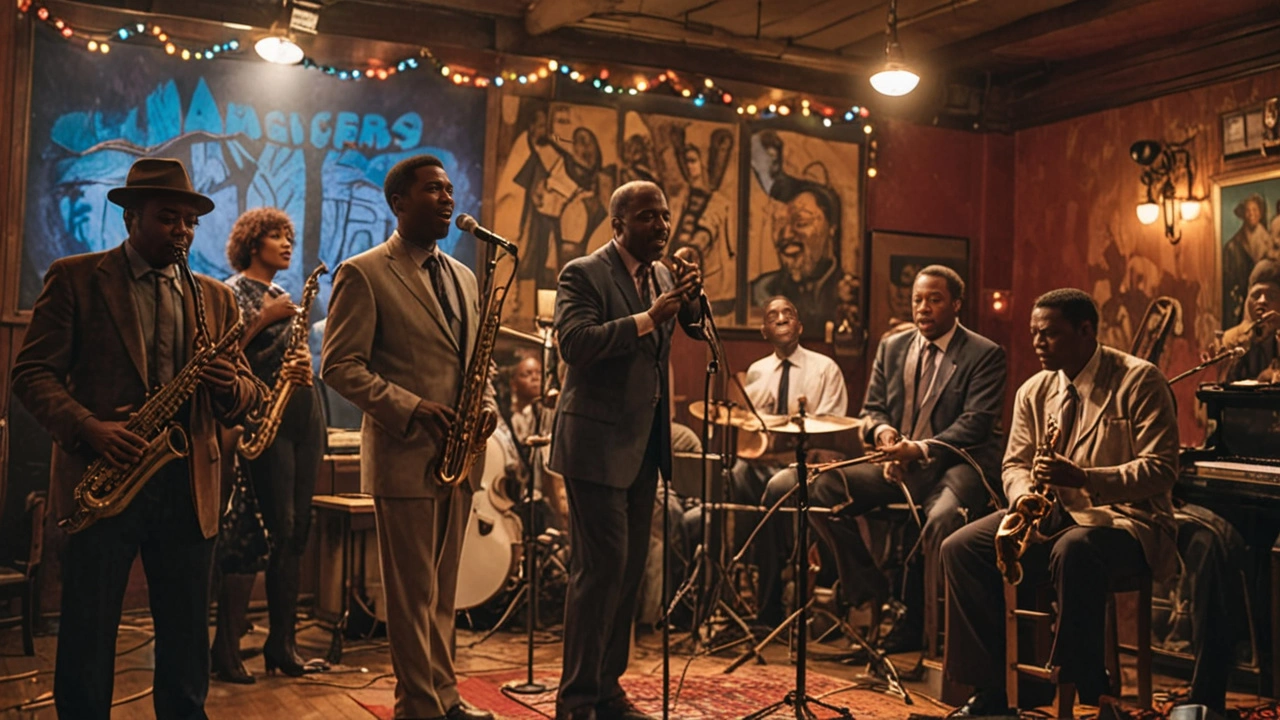
Signature Sound
The hallmark of Rhythm and Blues lies in its unique and captivating sound. At its core, R&B is characterized by its emotive vocals, intricate musical arrangements, and steady, compelling rhythms. This genre seamlessly blends elements from jazz, blues, and gospel, creating a sound that is distinctly soulful and deeply moving.
One of the standout features of R&B is its vocal style. The singers' voices often exhibit a wide range, both in pitch and in emotion. Legends like Aretha Franklin, affectionately known as the Queen of Soul, are known for their powerful voices that can soar into high notes and dive into deep, resonant tones. This vocal dynamism is often complemented by techniques such as melisma, which adds a layer of expressive flair to the delivery.
The instrumentation in R&B is equally significant. The genre typically features a rhythm section composed of drums, bass, and piano or organ. These instruments create a solid, infectious groove that forms the backbone of the music. Guitar and brass sections often add additional layers of texture, with guitars providing both rhythmic and melodic elements and brass instruments introducing rich, bold sounds that enhance the overall feel.
One cannot discuss R&B without mentioning the importance of rhythm. The genre's name itself highlights the importance of timing and groove. The beats are usually laid-back but groovy, inducing a head-nodding effect. Syncopation, where accents are placed off the usual beats, gives R&B its characteristic swing and sway. This rhythmic complexity often invites listeners to not just hear the music but to feel it on a physical level.
Harmony also plays a critical role in shaping the R&B sound. Vocal harmonies, often using lush, intricate arrangements, add depth and resonance. The call-and-response pattern, rooted in African American musical traditions, is frequently employed, where one vocal line poses a question or statement, and another line or group of singers answers it. This technique creates a dynamic interaction that engages and captivates the audience.
In terms of lyrical content, R&B songs focus heavily on themes of love, heartbreak, and human experiences. These themes are expressed with an authenticity that connects deeply with the listener's emotions. The storytelling aspect is crucial, with lyrics often delving into personal stories and relatable experiences. This emotional honesty ensures that the music resonates on a profound level.
Production techniques in R&B have evolved over time, yet the genre maintains a preference for warm, rich sounds. Analog recording methods, as opposed to digital, are often favored for their ability to capture the warmth and depth of the music. This production style gives R&B its characteristic vintage yet timeless feel.
"Rhythm and blues are the roots of all modern music. When you want to reach the soul of your audience, R&B is the surest path." - Stevie Wonder
The signature sound of R&B is not static; it has continually evolved, incorporating new influences while staying true to its roots. From Motown hits to the smooth neo-soul of the 90s and contemporary R&B, each era adds new textures and techniques, ensuring that the genre remains fresh and relevant. Today's artists, like Alicia Keys and John Legend, continue to push boundaries while honoring the tradition, making R&B an ever-evolving genre that continues to captivate and inspire.
Cultural Impact
The cultural impact of Rhythm and Blues (R&B) is profound and far-reaching. From its inception in the 1940s, R&B has been much more than just a musical genre. It has acted as a voice for the African American community, highlighting social issues, celebrating struggles, and elevating the human experience in everyday life. This genre bridged cultural divides, allowing broader audiences to connect with the evocative power of music born out of genuine human emotions.
Throughout the Civil Rights Movement, R&B played a crucial role in providing a soundtrack for change. Songs like Sam Cooke's “A Change is Gonna Come” became anthems of hope and resistance. These artists were not just entertainers, but also activists using their platforms to promote social equality and justice. The resonance of their music extended beyond concert halls and record players, seeping into the very fabric of cultural and societal norms.
R&B's influence isn't confined to the past; it continues to shape modern culture. The genre paved the way for the development of hip-hop and modern pop music, influencing how we perceive music in contemporary society. Many modern artists like Beyonce and Bruno Mars have drawn inspiration from R&B legends, blending traditional elements with contemporary sounds to create new music that still honors its roots. With every beat, the genre continues to inspire, reminding listeners of the struggles and triumphs of those who came before.
Media, too, has been profoundly influenced by R&B. Iconic music videos and live performances by artists like Michael Jackson and Whitney Houston set standards that are still followed by today's musicians. The visual representation of R&B often includes expressive dance and fashion, creating an interwoven tapestry of audio-visual artistry that continues to captivate audiences around the world.
Fashion has also felt the touch of R&B’s cultural impact. Styles popularized by R&B artists often find their way into mainstream fashion. The bold and expressive clothing worn by singers like Prince and Mary J. Blige set trends that influenced the fashion industry in the 1980s and 1990s. These choices were often political, making statements about identity, freedom, and pride. Even today, the fashion industry looks to R&B artists for inspiration.
During the late 20th century, TV shows and movies began incorporating R&B into their soundtracks to underscore cultural narratives and storytelling. For instance, the film ‘The Bodyguard’ featuring Whitney Houston and her unforgettable song “I Will Always Love You” became a cultural phenomenon. Soundtracks from R&B artists added depth and emotion to visual storytelling, fundamentally changing the landscape of media.
R&B has also played a role in community building and social movements. For example, Motown Records, founded by Berry Gordy, revolutionized the music industry by bringing African American music to a mainstream white audience, thus breaking down racial barriers. The Motown sound became synonymous with the Civil Rights Movement, providing anthems that fueled the fight for equality and justice.
The genre's impact extends to language and slang. The colloquial expressions popularized in R&B lyrics often find their way into everyday language, further demonstrating the genre’s reach within cultural norms and social lexicons. The expressive language of R&B, full of emotion and nuance, provides a rich source of slang and idioms that add to the tapestry of modern language.
Today, R&B continues to be a powerful cultural force. Its ability to adapt while staying true to its emotional core allows it to remain relevant across generations. As the music continues to evolve, it reflects the changing dynamics of society, making it a perpetual voice for the human experience.
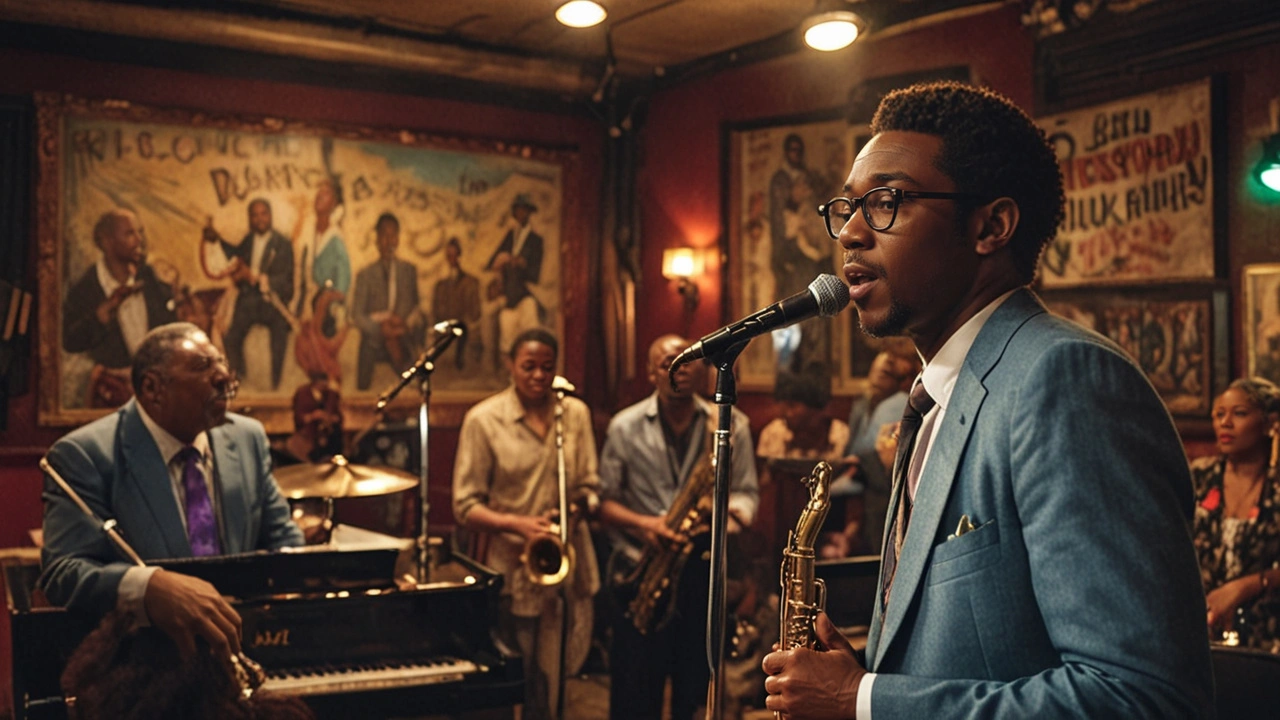
Modern Revival
In the last decade, the revival of Rhythm and Blues has taken the music world by storm. Modern R&B artists are breaking boundaries and bringing fresh perspectives to this beloved genre. A prime example is Beyonce, whose album "Lemonade" seamlessly blends classic R&B with contemporary sounds, tackling themes of identity, womanhood, and resilience.
Another pivotal figure in this revival is Bruno Mars. His homage to 80s and 90s R&B in tracks like "Finesse" brings nostalgia while staying current. These artists are not just recycling old sounds but infusing them with new energy and creativity.
Collaborations have also played a significant role in the genre's resurgence. Crossovers with hip hop, pop, and even electronic music have introduced R&B to wider audiences. For instance, the duet between Daniel Caesar and H.E.R. on "Best Part" showcases the delicate balance between traditional R&B rhythms and modern storytelling.
Streaming platforms have become crucial in the genre's modern movement. Services like Spotify and Apple Music offer curated playlists that highlight emerging R&B talent. These platforms provide artists with a global stage, making it easier for fans to discover and appreciate the diversity within the genre.
"Streaming has democratized the music landscape, giving artists the power to reach listeners directly," said a renowned music analyst. "It's incredible to see how R&B has adapted and thrived in this digital age."
The influence of social media cannot be understated either. Artists like SZA and Frank Ocean use these platforms to connect with fans and share their creative process. This direct interaction builds a loyal fanbase and keeps the genre thriving with fresh content and ideas.
The live music scene is also seeing a revival. Festivals such as the Essence Festival and the BET Awards spotlight contemporary R&B artists, providing them with venues to showcase their talent. These events celebrate the genre's past while looking forward to its future.
Moreover, chart success has turned the tide for R&B. According to a report by Nielsen Music, R&B/hip-hop was the most popular genre in the U.S. in 2020, accounting for 28.2% of the total music consumption across album sales, downloads, and streaming. This statistic underscores the genre's significant impact and appeal.

